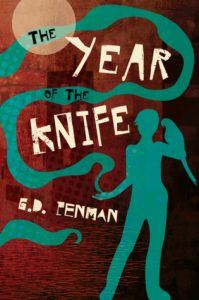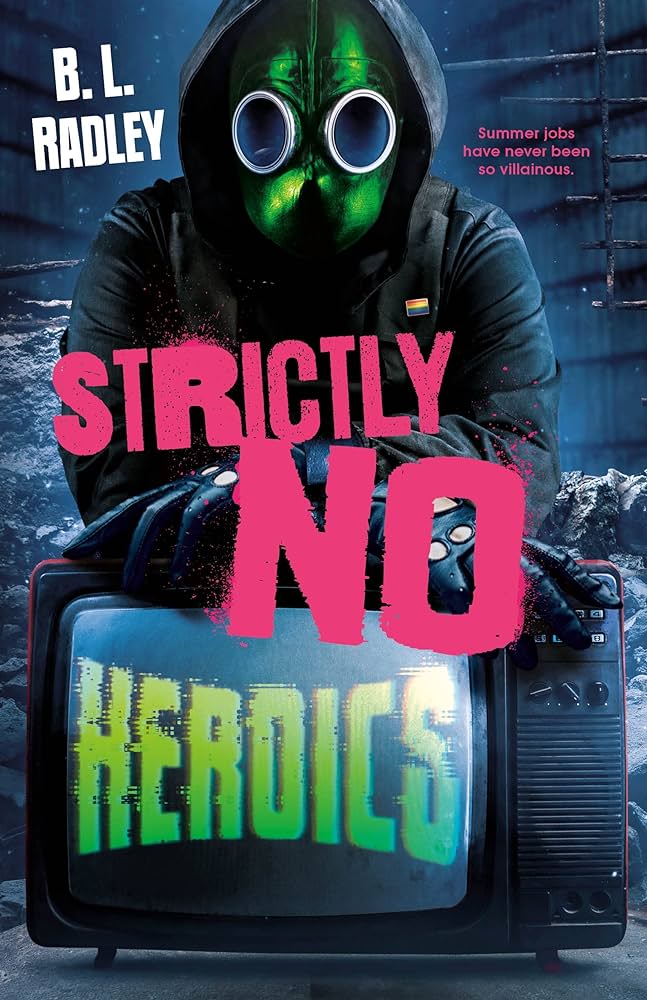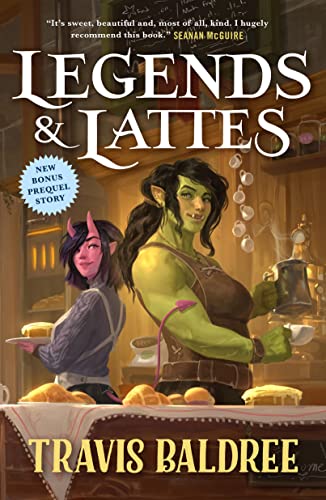Sully has not been having a good summer. She works for IBI, the investigation bureau of the British empire, and despite the strikes against her–woman, Irish, gay–she has managed to gain some respect by being the best in the field. She may have learned from a hedge witch, but she can hold her own against any university-educated magic user. But she may officially be in over her head: every day, a new person, seemingly possessed, has been acting out public, grisly murders. That’s impossible, though: demons can’t possess living people. The body count is climbing higher, and her boss being stuck as a parrot isn’t helping any. Can she end the reign of what the killers keep calling “The Year of the Knife”?
The Year of the Knife is a grungy, gory urban fantasy. While the plot focuses on Sully attempting to solve this string of crimes, most of them gruesome mass stabbings, there are a lot of balls in the air: in this world, the British empire still rules much of the world, including New Amsterdam (which seems to be near Brooklyn), where Sully lives. There is an undercurrent of tension around this: in Ireland, for instance, hedge witches with borrowed power have attempted revolution many times, each time getting cracked down on by imperial power, which causes more resentment, fueling the next rebellion.
On top of the mystery and alternative history elements, of course, there’s the magic system. I was impressed by how complex this world is, and I appreciated that the magic system seemed to be cohesive and clearly defined: magic users have to speak spells, draw glyphs in the air, and often work out mathematical equations (if you fudge the numbers in a travel spell, you might find yourself lodged in a wall when you arrive). Whenever I’m reading about a world that has magic, I want to know that the author has thought it out. Specifically, there needs to be clear limits to magic, or else there can never be believable tension. This world comes with a magic system that makes sense to me. In case there wasn’t enough going on, there are also demons in this world, pushing through from another plane of existence. And those might not be the only dimensions at play!
While I was intrigued by the world, I had trouble connecting with the main character. I’m all for a gruff, unlikeable female character, but Sully takes it to another level. She cackles as people die under her use of magic–seeming to take pleasure in it even when the person being killed deserved, at the very least, some pity. At the same time, she can’t handle being in charge because she can’t deal with deaths of her colleagues on her conscience. She has her own resentment of the British empire, but she seems to judge other groups who speak out against it. What really got to me, though, was the multiple times when Sully mentions seeking out young, possibly underage women to have sex with. She goes to student nights at bars to take home “presumably legal” experimental college students. She wakes up with a girl and wonders if she was a teenager after all. That is not cute. Sully is nowhere near these women’s ages, and it’s skeezy at best and illegal at worst.
Sully does have a girlfriend–sort of. She has a tumultuous relationship with her ex. At one point, they were engaged, but after her girlfriend left her at the alter, things have been tense. They still sleep together occasionally, usually when her ex needs some blood. (Did I mention that she’s a vampire?) They punish each other while still not being able to let each other go. I was interested in their relationship, but it felt like there was something missing. I didn’t quite understand why they had the dynamic they did, and they seemed to quickly fall back into a loving relationship, so I didn’t feel like I really understood them as a couple.
I did have a couple of concerns, the most major of which was the racism. I understand that the idea is that with the empire still ruling most of the world, racism is even more entrenched than it is now, but having, for instance, Chinese people described as “Oriental” and an Egyptian guy as “swarthy”–while apparently all Native Americans Sully has ever known have been breathtakingly beautiful, though for some reasons they’re all deeply bigoted against vampires–pulled me out of the story. There are a lot of instances like these: casual racism scattered throughout the text. It was jarring enough for me as a white reader. I can imagine many readers of colour wouldn’t find it worth pushing through them.
My other major complaint was with the specific focus of the book. Maybe it’s the Canadian in me, but focusing on New York in this alternate timeline of continued British occupation felt like the most uninteresting take on the idea. I would have liked to see pretty much anywhere else in this world: Hawaii, Puerto Rico, and India, to name a few. [spoilers, highlight to read] Near the very end of the book, the plot ground to a halt with an extended flashback to 1775. Flashbacks during the climax of the plot are dicey at the best of times, but personally, I find the American Independence setting deeply boring. If there had been some way to incorporate this flashback into smaller ones throughout the book (if they were made vague) would have worked better for me. Even if it was condensed into a smaller amount of exposition, I would have felt less whiplash. Going from the most dramatic part of the book to the slowest section is not the best reading experience. [end spoilers]
This sure was an interesting reading experience! I will be watching to see if this is spun into a series, because the world definitely could support it.
This has been a sponsored review. For more information, check out the Lesbrary’s review policy.


